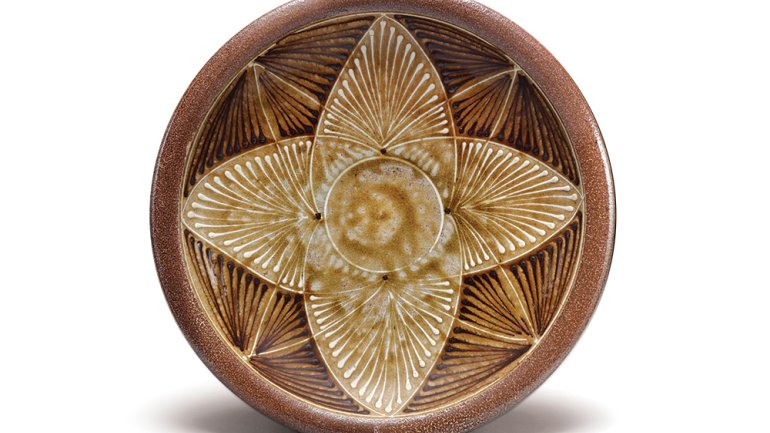Coming Home to Clay
Coming Home to Clay
Alex Matisse thought he’d left pottery behind, but his longtime passion had other ideas.
Alex Matisse departed new England to attend college in North Carolina, in part to leave ceramics behind. Three weeks into classes at Guilford College in Greensboro, he found himself in the school’s pottery studio, reunited with his passion.
“I’ve been working with clay since the seventh grade,” says Matisse, 30. “But after high school, I had a change of heart. Some of it was ‘If I’m going to be in college, I’m going to do something academic,’ and some of it was just family stuff, wanting to get away.” Yes, that family. Matisse avoids mentioning the connection, but Henri Matisse was his great-grand-father. His grandfather, the gallery owner Pierre Matisse, heavily influenced the modern art movement in America; his parents are artists in Massachusetts, where he was raised.
“I’ve been given a lot of opportunities, but my desire is to do work that stands on its own merits,” he says. “It’s a complicated thing to figure out internally, but I’ve kept doing what I can as well as I can.”
Matisse didn’t know about North Carolina’s long pottery tradition, but the red-clay state turned out to be the perfect place to make his mark. First, however, he learned from two traditional masters, leaving college during his sophomore year to apprentice with Matt Jones for two years, then with Mark Hewitt for one year.
“A formal apprenticeship is like playing musical scales. It’s a super way to learn technique, and you’re absorbing what it takes to run a successful business,” he said. “It also really brings you into a community of people.”
In 2009, Matisse struck out on his own, setting up East Fork Pottery on a former tobacco farm. The 30 acres, mostly wooded, are tucked into a hollow surrounded by mountains. He and his partner, Connie Coady, who oversees much of the business and marketing side of the studio, live in nearby Asheville.
From the start, Matisse followed the model of his teachers, blending Carolina folk traditions with wheel-thrown, wood-fired stoneware vessels and plates. Some were adorned with nature-inspired designs applied by slip-trailing, a method of decorating clay surfaces.
He continues to create stoneware, but a commission for a chandelier fired up another passion – pendant lighting. While his pottery is earthy and rustic, the lighting, made of slip-cast translucent porcelain, is elegant and sophisticated. Some lights are plain; others are covered with intricate patterns reminiscent of folk art.
“It’s a technique I’d never done before, and I had a ton of help with it,” he says.
“I slip-trail onto the mold using a Zircopax opacifier. It adds a small bubble that kills the translucency where I’m decorating. It’s so different from the wood-fired world, where serendipity is a factor. This is all about control.”
Another craftsman, Will Dix, is helping produce the lighting, but Matisse does the slip-trailing.
“I’ve taken on far too many things,” he says. “If we’re going to do it all, it can’t be just me.”
To that end, last year Matisse opened his studio to potter John Vigeland, another Hewitt apprentice.
“It’s an experiment in moving the individualistic studio to a more inclusive model – the European atelier,” says Matisse, who would like to see East Fork support many artists, creatively and financially.
Matisse recently completed a solo show at the Memorial Art Gallery in Rochester, New York, and will share the stage with Vigeland at an Atlanta gallery in November. Meanwhile, he’s working on more projects, including a series of dining collaborations with chefs and farmers. (Coady worked at a high-end restaurant for several years and helped facilitate Matisse’s foray into the food world.)
Matisse dreams big, ruminating about socially conscious projects that might assist people by teaching them crafts, à la the Delancey Street Foundation.
“I feel a lot of responsibility,” Matisse said. “I’ve been born into a family with a lot of resources. Me not using those resources is me not doing my part.”
Signature Contemporary Craft in Atlanta will show works by Alex Matisse and John Vigeland in November. Diane Daniel is a writer in Durham, North Carolina.

